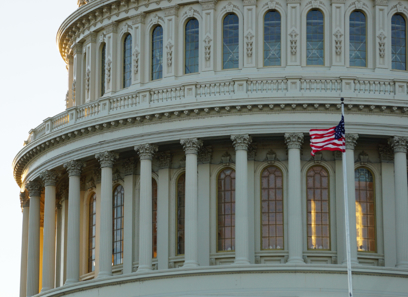M&A Outlook: Key Trends Shaping the Future of Mergers and Acquisitions
M&A Outlook: Key Trends Shaping the Future of Mergers and Acquisitions
Blog Article
The Impact of Mergers and Acquisitions on Market Characteristics and Competitors
The landscape of acquisitions and mergings offers a complicated interaction between promoting development and potentially weakening affordable integrity within markets. As business seek strategic positionings to boost efficiency and development, the implications on customer choice and market prices warrant cautious analysis. While the benefits of such loan consolidations can be noticeable, the darker effects commonly arise, raising vital concerns concerning market power and the governing frameworks developed to preserve equilibrium. This conversation welcomes an expedition of the nuances included, exposing exactly how these company maneuvers improve the very foundations of competition.
Introduction of Mergers and Acquisitions
Mergers and purchases (M&A) play an essential duty in shaping the landscape of modern-day business, as companies seek to improve their competitive edge and achieve strategic purposes. M&A purchases include the loan consolidation of companies or assets via numerous monetary transactions, including mergings, where two firms incorporate to develop a new entity, and procurements, where one firm purchases another outright. These tasks are driven by a myriad of elements, such as the pursuit of harmonies, diversification of product offerings, and the wish to enter brand-new markets.
The M&A process usually includes several phases, including strategic preparation, due persistance, negotiation, and assimilation (Emerging Market Opportunities). Business conduct detailed analyses to recognize prospective targets that align with their development strategies and analyze the operational and economic ramifications of a purchase. Regulative factors to consider likewise play a critical function, as antitrust laws are made to stop monopolistic methods that can hurt competitors
As organizations browse the intricacies of M&A, the outcomes can dramatically impact stakeholders, including investors, clients, and staff members. Comprehending the characteristics of M&A is necessary for assessing their effects within the more comprehensive context of market behavior and competitive positioning.
Positive Impacts on Market Characteristics
The consolidation of firms via mergings and purchases can lead to significant favorable impacts on market dynamics. This efficiency can translate right into lower prices for customers, promoting a much more competitive market setting.

Furthermore, increased market share arising from mergings can offer firms with greater bargaining power with suppliers and distributors, promoting boosted terms and problems that can benefit the overall supply chain.
Unfavorable Consequences for Competition

Furthermore, the removal of rivals with purchases can suppress advancement. When principals combine, smaller firms may struggle to compete, leading to a homogenization of product or services. The resultant lack of competitors can develop a setting where continuing to be firms have much less incentive article source to invest in research and development.
Furthermore, mergings can develop obstacles to entrance for new companies, as the joined entity might utilize its enhanced sources to dominate the market. This can hinder possible participants, therefore restricting competition and advancement in the lengthy term.
Inevitably, while purchases and mergings can provide critical benefits, their potential to threaten competition necessitates mindful factor to consider of their broader implications on the market dynamics. The equilibrium between development and competitive integrity stays a vital concern in reviewing such business strategies.
Governing Factors To Consider and Oversight
Regulatory structures play a critical function fit the landscape of mergers and acquisitions, ensuring that market dynamics continue to be competitive and reasonable. These frameworks are made to avoid anti-competitive actions and to safeguard customer interests. Regulative bodies, such as the Federal Profession Commission (FTC) in the USA and the European Commission in the EU, assess recommended mergers and purchases based on their possible influence on competition within the marketplace.
The assessment process entails a comprehensive examination of the marketplace share, potential for monopolistic methods, and the general financial implications of the transaction. Regulators typically impose conditions or need divestitures to alleviate problems over reduced competition, making sure that the joined entity does not control the marketplace unjustly.
Moreover, transparency is a key component of regulative oversight. Stakeholder interaction, consisting of public appointments, permits for varied viewpoints to be considered in the decision-making process. This collaborative method assists to promote a balanced regulative atmosphere that promotes advancement while securing affordable methods. Eventually, efficient regulative considerations are vital in maintaining market integrity and motivating healthy and balanced competitors when faced with progressing service landscapes.
Study and Real-World Examples
Frequently, instance research studies of noteworthy mergings and purchases illustrate the extensive impacts these transactions can carry market characteristics. The 2000 merger in between AOL and Time Detector serves as a prime instance, where the expected harmonies failed, leading to a radical decline in investor value. This instance underscores exactly how social misalignments and Full Report overestimation of market potential can interfere with competition.
In comparison, the acquisition of WhatsApp by Facebook in 2014 exhibits a successful assimilation that reshaped the interaction landscape. Emerging Market Opportunities. Facebook leveraged WhatsApp's individual base to boost its service offerings, properly enhancing its market prominence while maintaining competitors in the messaging sector
One more substantial case is the merging read the full info here of Exxon and Mobil in 1999, which developed one of the globe's largest oil business. This combination brought about greater effectiveness yet raised worries about lowered competitors in the energy market, prompting governing scrutiny.
These examples highlight the complex interplay in between procurements and mergings and market dynamics, showcasing both the prospective advantages and pitfalls that can occur, ultimately shaping competitive landscapes throughout markets.
Conclusion
Mergers and purchases play a crucial duty in shaping market characteristics and competition. While they can result in raised effectiveness and innovation, they likewise posture dangers such as minimized competitors and higher customer rates. Reliable regulatory oversight is vital to ensure that the benefits of M&A tasks are made best use of while minimizing unfavorable effect on market competition. A balanced strategy can help protect consumer welfare and cultivate a competitive landscape that motivates both development and technology.
One major problem is the potential for minimized market competitors, as mergers often lead to the consolidation of market power amongst less gamers. Governing bodies, such as the Federal Profession Commission (FTC) in the United States and the European Compensation in the EU, assess recommended mergings and acquisitions based on their possible impact on competitors within the market.

Mergers and acquisitions play a critical duty in shaping market dynamics and competitors. Reliable governing oversight is important to guarantee that the advantages of M&An activities are optimized while mitigating unfavorable impacts on market competitors.
Report this page